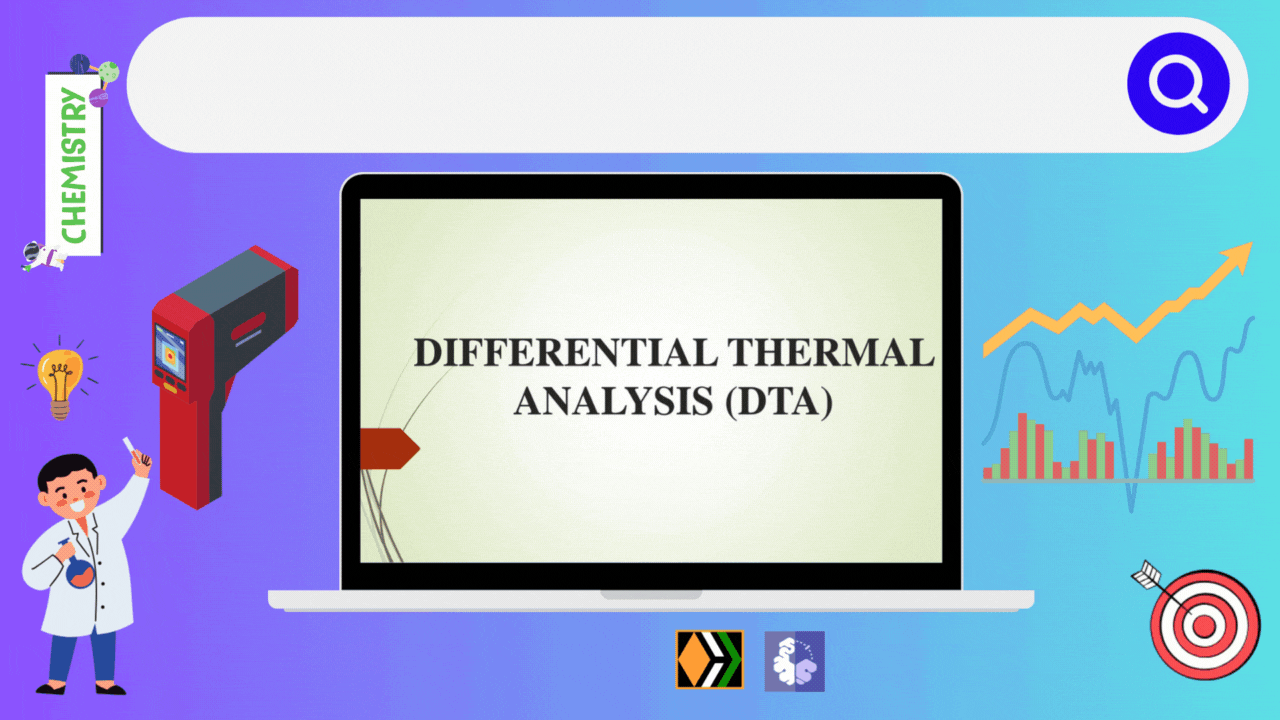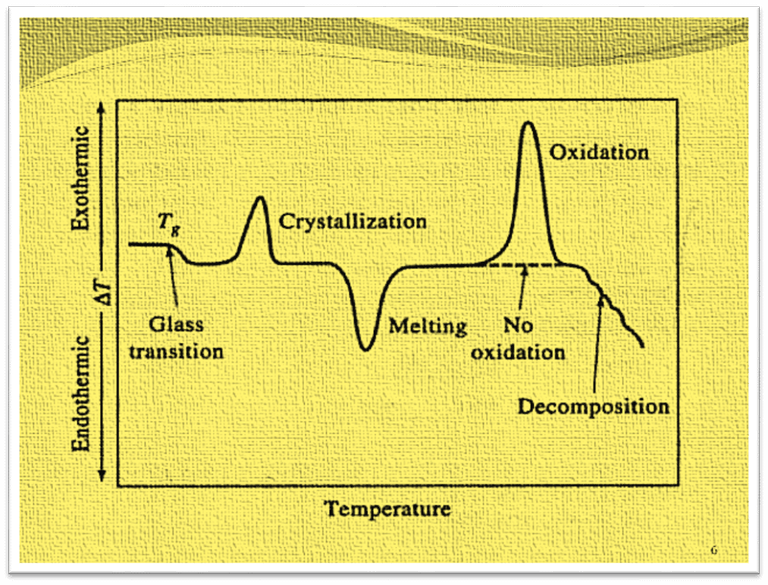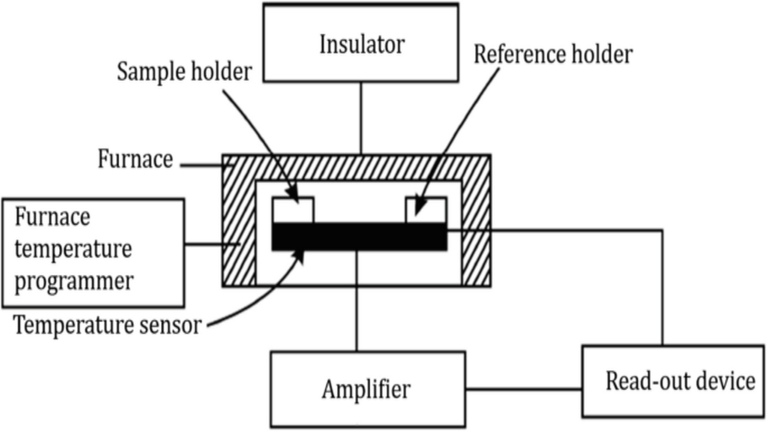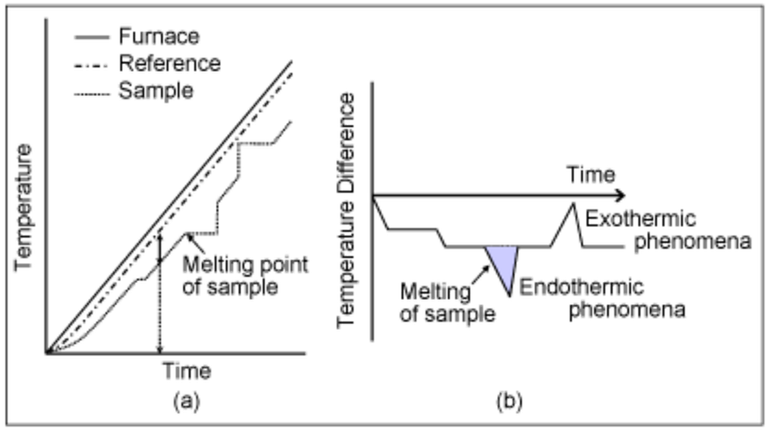Cracking the Thermal Code: Differential Thermal Analysis in Modern Research |ChemFam #69|
Greetings to everyone! Picture a tango between temperature and materials, where every step reveals a secret, a story or a transformation. That's essentially what Differential Thermal Analysis (DTA) does - it waltzes through the thermal characteristics of materials, unraveling their mysteries as they respond to the rhythm of changing temperatures. Differential Thermal Analysis (DTA) is a powerful analytical technique that plays a crucial role in understanding the thermal behavior of materials. It provides valuable insights into physical and chemical transformations that occur within substances as they undergo temperature changes.

Differential Thermal Analysis is employed across various scientific disciplines, including chemistry, material science, geology, and metallurgy, to unravel the mysteries hidden within the thermal characteristics of diverse materials. In this article, we'll take a stroll through the world of DTA, exploring how this elegant dance helps scientists and researchers understand the essence of different materials.
Principle of Differential Thermal Analysis:
The basic principle involved in DTA is the temperature difference (ΔT) between a test sample and an inert reference sample under controlled and identical conditions of heating or cooling is recorded continuously as a function of temperature or time, thus the heat absorbed or emitted by a chemical system is determined. This differential signal is then plotted against temperature to create a thermogram, which provides a visual representation of thermal events. Thus a differential thermogram consists of a record of the difference in sample and reference temperature (ΔT) plotted as a function of time, t, sample temperature, Ts, reference temperature, Tr, or furnace temperature, Tf.
An ideal DTA curve is shown in the figure below in which there is an exothermic and an endothermic peak. Generally sharp endothermic peak gives ideas of change in crystallinity or fusion process whereas broad exothermic peak signify dehydration reaction. In most of the cases, physical changes give rise to endothermic curves, while chemical reaction (particularly those of an oxidative nature) gives rise to exothermic peak.

Characteristics of DTA:
The DTA curve would be parallel to temperature (or time) axis till the sample undergoes any physical or chemical change of state. However as soon as the sample has reached the temperature of the change of state, the additional heat flux reaching the sample will not increase the sample temperature at the same rate as that of reference and the differential signal will appear as a peak. The differential signal would retrun to base line only after the change of state is completed and the temperature becomes equal to that of the reference material.
In an endothermic change such as melting or dehydration of the sample, the temperature of the sample is lower than that of the reference material, i.e., ΔT = (-) negative for endothermic process.
In an exothermic process, the sample temperature is higher than that of the reference material i.e., ΔT = (+) positive for exothermic process.
In most cases physical change gives endothermic peaks while chemical changes gives exothermic peaks.
Instrumentation for DTA: Block Diagram
The DTA apparatus consists of the following components-

- Furnace sample and reference holder with thermocouple assembly.
- Sample holder furnace: to heat the sample.
- Furnace temperature controller: to increase the furnace temperature steadily.
- Furnace atmospheric control system: To maintain a suitable atmosphere in the furnace and sample holder.
- Low level DC amplifier: for amplification of signals obtained from thermocouple.
- Recording device (Recorder)
- Differential temperature sensor: to measure the temperature difference between the sample and reference material.
Factors affecting DTA curve:
Instrumental factors:
(a) size and shape of sample and furnace holder
(b) Material from which sample holder is made and its corrosive attack.
(c) Heating rate (furnace heating rate).Sample characteristics:
(a) Amount of the sample (sample weight).
(b) Particle size of the sample.
Applications of DTA:
In the field of chemistry, DTA is widely used to study phase transitions, such as melting, crystallization, and decomposition. By subjecting a substance to controlled temperature changes, chemists can identify key thermal events associated with these transitions. This information is crucial for understanding the stability and reactivity of various compounds, aiding in the design and optimization of chemical processes.

- Materials Science and Engineering:
Materials scientists leverage DTA to investigate the thermal properties of a wide range of materials, including polymers, ceramics, and alloys. By analyzing the thermal behavior, researchers can gain valuable insights into the composition, purity, and structural integrity of materials. DTA is particularly useful in the development of new materials with tailored properties, ensuring that they meet specific performance criteria under various temperature conditions.
- Geological Applications:
In geology, DTA is applied to study the thermal behavior of rocks and minerals. By subjecting geological samples to controlled temperature changes, researchers can uncover information about their mineral composition, phase transitions, and thermal stability. This aids in understanding the geological history and formation processes of rocks, contributing to advancements in the field of earth sciences.
- Metallurgical Insights:
Metallurgists utilize DTA to investigate the thermal properties of metals and alloys. This includes studying processes such as phase transformations, eutectic reactions, and precipitation hardening. The information obtained through DTA is invaluable for optimizing heat treatment processes in metallurgy, ensuring the production of materials with desired mechanical and thermal properties.
Conclusive thoughts:
Differential Thermal Analysis is a versatile and indispensable tool for scientists and researchers across various disciplines. Its ability to unveil the thermal behavior of materials, from chemicals to geological samples, provides a deeper understanding of their properties and behaviors. As technology continues to advance, the applications of DTA are likely to expand, offering new insights into the intricate world of material science and thermal analysis.
Until we meet again :)

Principle of differential thermal analysis
DTA- An Overview | ScienceDirect
Applications and Importance of IR Spectroscopy: Shedding Light on Molecular Structures |ChemFam #68|
The Silent Revolution: How Polymers are Shaping Our World? |ChemFam #67|
Beyond the Bin: The Many Faces of Plastic Management |ChemFam #66|
Spectrophotometry Simplified: The Beer-Lambert Law in Spectrophotometry |ChemFam #65|
Chromatography: Unraveling the Science of Separation |ChemFam #64|
Colorful Clues: The Magical World of Chemical Indicators |ChemFam #63|
Colloids in Action: Impacting Your Daily Life More Than You Think |ChemFam #62|
The Complex Landscape of Opioid Analgesics: Addressing The Concerns |ChemFam #61|
Genetic Engineering: Pioneering Progress or Ethical Predicament? |ChemFam #60|
The Guardians Against Microbial Menace: Antibacterial Agents |ChemFam #59|
The Cholesterol Conundrum: The Story of Statins |ChemFam #58|
Unveiling The Control Of Chemistry: How Hormones Dictate Our Mood |ChemFam #57|
Thermodynamic Versus Kinetic Control of Reactions |ChemFam #56|
Bosons: The Quantum Glue That Holds The Universe Together |ChemFam #55|
Extraction of Lithium Using Electrode Materials of Lithium Ion Battery-II |ChemFam #54|
Extraction of Lithium Using Electrode Materials of Lithium Ion Battery |ChemFam #53|
Helium: The First Noble Gas |ChemFam #52|
Hydrogen: The Simplest Atom |ChemFam #51|
Elements, Atoms and Atomic Theory |ChemFam #50|
Have You Thanked A Clod Today? |ChemFam #49|
Nuclear Energy: Will It Rise Again? |ChemFam #48|
Soaps: An Essential and Effective Cleansing Agent |ChemFam #47|
Chemicals in Food : Debunking Myths and Ensuring Safe Consumptions |ChemFam #46|
Unveiling The Secrets of Antiseptics and Disinfectants |ChemFam #45|
PS The thumbnail image is being created by me using canva.com



This post has been manually curated by @bhattg from Indiaunited community. Join us on our Discord Server.
Do you know that you can earn a passive income by delegating to @indiaunited. We share more than 100 % of the curation rewards with the delegators in the form of IUC tokens. HP delegators and IUC token holders also get upto 20% additional vote weight.
Here are some handy links for delegations: 100HP, 250HP, 500HP, 1000HP.
100% of the rewards from this comment goes to the curator for their manual curation efforts. Please encourage the curator @bhattg by upvoting this comment and support the community by voting the posts made by @indiaunited.
!LUV
@pravesh0 sent you LUV 🙂 (1/10)
Made with LUV by crrdlx
Thanks for your contribution to the STEMsocial community. Feel free to join us on discord to get to know the rest of us!
Please consider delegating to the @stemsocial account (85% of the curation rewards are returned).
You may also include @stemsocial as a beneficiary of the rewards of this post to get a stronger support.